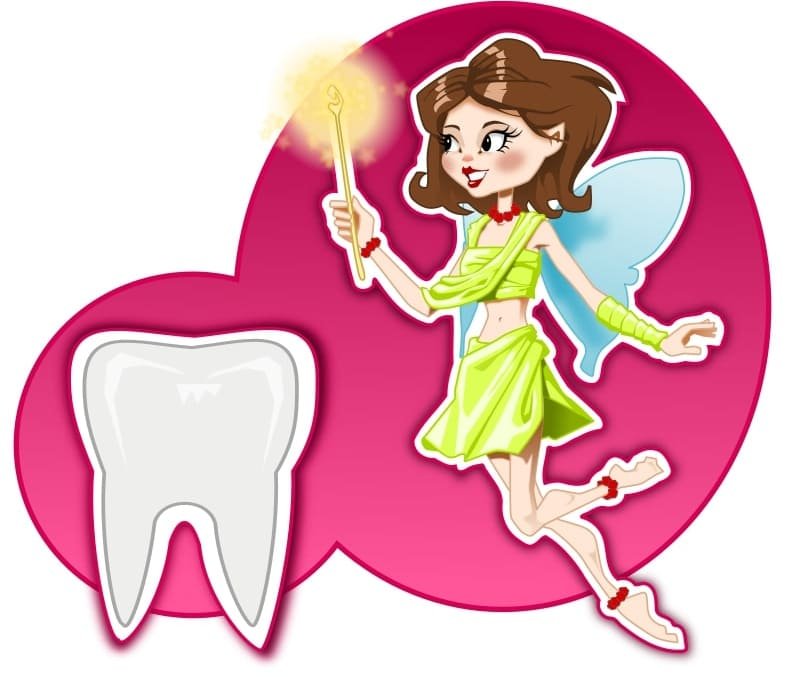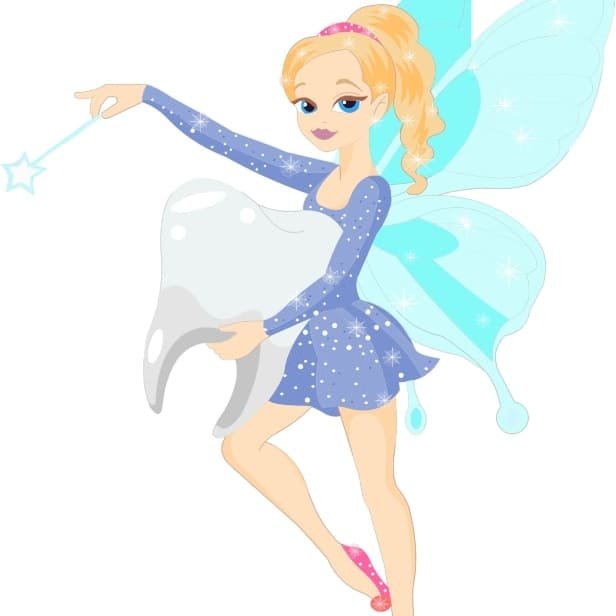Babies losing their teeth is a reason for celebration worldwide, and the legend of the Tooth Fairy is the most popular. The tooth Fairy doesn’t just collect lost teeth, but she also helps parents teach children about good oral practices.
But, have you ever wondered how a tooth fairy looks like? What does the tooth fairy look like? What is its appearance? How does tooth fairies look like in different cultures?
Today, let’s look at what the Tooth Fairy looks like and the backstory behind this famous tale!
Where and when did the Tooth Fairy legend start?

The first mention of the Tooth Fairy was in 1908, in Chicago Tribune, and even if the public was curious about this Fairy, it wasn’t brought into view until 1927 in Esther Watkins Arnold’s three-act playlet.
The story was brought to life starting in the 1970s when it was mentioned on the radio and television. Parents found relief in this legend, as it allowed them to explain the changes to their children and help them understand correct oral practices.
The Tooth Fairy visits children at night and trades their teeth for money or sweets. With this story in mind, children are not so upset about their teeth, and the transition becomes smoother.
What Does The Tooth Fairy Look Like? 5 Looks Of A Real Tooth Fairy (in Different cultures)

Usually, mythical creatures have a similar, if not identical, appearance in various cultures. But the Tooth Fairy can appear different in different parts of the world.
Tooth Fairy Look #1: USA, UK, Australia, Denmark:
In the USA, where the Tooth Fairy originates, it appears like a small fairy with wings and a magic wand. This small Fairy sometimes varies according to the children’s imagination, which can add details to it in terms of outfit and hair color.
She enters the bedroom by flying through the window, but thanks to her magic skills, she can also pass through closed windows. Also, this small Fairy is thought to leave a pinch of glitter on the child’s bed if it is time to lose a tooth.
The same myth is thriving in the United Kingdom, Denmark, and Australia.
Tooth Fairy Look #2: Mexico, Spain, Peru, Chile:
In Hispanic countries, the Tooth Fairy appears to be a mouse instead of an actual fairy presence. Here, the Tooth Fairy is known as El Ratoncito Pérez or Ratón Pérez. This mouse looks very much like any other mouse, but it has clothes, glasses, and a list of the children he needs to visit.
He was illustrated for the first time in 1911 by Mariano Pedrero on the cover of the tale “Ratón Pérez” by the Spanish writer Luis Coloma. But despite its different name and appearance, it has the same purpose of trading children’s teeth for sweets or money. In Madrid, there is an entire museum for the Ratón Pérez.
Tooth Fairy Look #3: France:
Like in Hispanic countries, French children are used to a mouse trading their teeth for treats or money. But this mouse is a girl mouse, and her name is La Bonne Petite Souris, French for The Good Little Mouse.
The legend comes from the novel of the same name by Madame d’Aulnoy, written back in the 17th century. In the old tale, the mouse doesn’t trade teeth for treats or coins, but it is a fairy disguised as a mouse to kill an evil king that was terrifying the kingdom.
Nowadays, we are left with a reasonably friendly mouse that fulfills the duties of a Tooth Fairy in France.
Tooth Fairy Look #4: Ireland:
In Ireland, the Tooth Fairy is a leprechaun girl called Anna Bogle. The legend says that Anna lost one of her front teeth while playing in the forest, and she has tried to replace it by getting a tooth from other children that will match hers.
But this leprechaun won’t steal teeth, as you would expect from the legend. She leaves a gift instead every time she takes a tooth from the child’s pillow, just like Tooth Fairy does.
Anna looks like a tiny leprechaun with curly orange hair, green clothes, and a green hat.
Tooth Fairy Look #5: Germany:
German children also have a version of the Tooth Fairy to look forward to, called Zahnfee. She doesn’t always have wings, and she looks like a little girl in a blue dress who offers little gifts to children every time they lose a tooth.
This German version of the Tooth Fairy doesn’t take her teeth with her. She has a day dedicated only to her every year on August 22nd.
Final thoughts
While the Tooth Fairy can take different appearances worldwide, it undoubtedly remains a fun aspect of the changes that young children go through.
The legend can be adapted in various ways by parents who want to help their children cope with oral aspects, which is why many families add details to it to make it more believable for the little ones. There is even a calculator to help you decide if the Tooth Fairy paid a fair amount for the teeth she took.
Irina Maria Tracy is a published author, writer, and journalist who lives in Bucharest, Romania. She completed her journalism and mass communication degree from the University of Bucharest and went on to publish some top books in the fiction genre. Some of her top books include 'Haunted Aliens' 'Vampires Rapture' 'Adverbs of Love' etc. Irina also worked as an investigative journalist for a year and even collaborated with a TV channel for a political talk show (Bah TV). She loves writing and has contributed to many top magazines and newspapers such as the 'Story Magazine' 'Curentul Newspaper' and many others.
